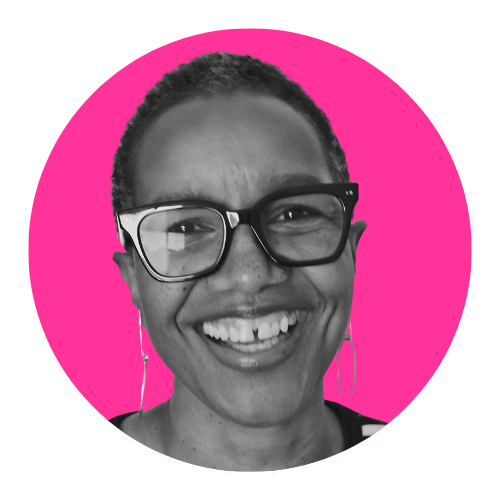
Wound care stopped me from getting a job.
That’s not a future I want for other workers.
Hi, I’m Dr. Mary-Elizabeth Harmon, scientist turned storyteller, caregiver and founder of Village Company 360.
In 2017, my dad, who had dementia, was put on hospice and became bedbound. At the time, he and my mom lived in a senior community where certain things worked:
- They didn’t become invisible, which tends to happen to older folks in the U.S.
- Independent and assisted living options were available to cater to Dad’s changing needs.
- Meals were included for all residents.
- There were common areas besides the dining room where people gathered for activities.
- Mom had access to a room to host singalongs, which helped her find purpose and stay sharp.
- Residents got free rides to the store and devotional services.
- Health and beauty practitioners regularly visited the community to offer services.
- There was a small eldercare agency onsite to provide help in a pinch.
But the things that worked were out-weighed by what didn’t:
- The energy of the place seemed to age my parents faster.
- Because residents were all older / in poor health, it was harder for neighbors to help neighbors.
- The meals were neither nutritious nor delicious, so my niece, sister or I cooked for my parents.
- Because their room and board were bundled, my parents paid for 1500+ meals they didn’t eat.
Home care for my parents “worked” the worst:
- There were high turnover and no-show rates with low-wage care aides, who typically prepped meals, did light cleaning and most importantly bathed my father and helped him to eat and drink.
- Agencies had strict rules on what their aides could do, or do without an extra (and too high) charge.
To spare Mom and Dad from spotty and over-priced care, I became their full-time caregiver, and we moved into a standard apartment building with mixed results:
- The place had a more lively energy and my parents’ spirits perked up.
- My parents saved over $1500 / month in housing costs.
- The apartment layout let us easily see (and say hi to) Dad in bed from the living room.
- My mom became the sole “old lady” in the building and lost socializing / singing with her peers.
- The building didn’t have regular programming to bring residents together.
- I had to chase down in-home services, like podiatry, that my father needed beyond hospice care.
- Without an eldercare agency onsite, I often enlisted my then 89-year-old mom for help.
After months of working out kinks, I thought that I could swing a part-time job. Two things stopped that: Dad was taken off hospice and he got a small bedsore after going back on.
- No hospice meant that Dad’s Medicare-funded visits from care aides stopped, so I picked up the slack. And when hospice resumed, he needed basic wound care that required a non-hospice nurse.
- Agencies in my area billed $75/hr for nursing services in 4-hour blocks, which would have rung up to thousands of dollars a month for around 4 hours labor total to clean a wound and apply a bandage.
- The nurse would need help to hold Dad steady. But lining up folks’ schedules was nearly impossible so I stayed at home to be there when an aide arrived and learned to do wound care myself.
Dad lived for years longer than expected and I became so tired that I fantasized about killing myself. It seemed nuts to be on the brink of death by a 1000 cuts in a building full of people.
I imagined some neighbors would have helped me occasionally the way I would help if the tables were turned. But the only neighbors I knew well were kids and their moms who had burdens of their own.

I thought often about Kenya, where my family had moved from Michigan in the 70s and where Jomo Kenyatta, freedom fighter and the 1st president, had roused me with his rallying cry:
HARAMBEE!
HARAMBEE! (Ha-rahm-bay) is Swahili for “Let’s ALL band together” to prosper!
After returning to the States with Harambee in my blood, I did lots of community building, including in my former condo in Atlanta. There, I found that my neighbors were eager to connect with neighbors.

Informed by my life experiences, I dreamed up Vertical Village Alliance, then parent entity Village Company 360, to spread the spirit of HARAMBEE! in the U.S.
More specifically, …
Village Company 360 is about fostering neighbor-led caring communities with medical support, to spread quality care for all and to help family caregivers to retain at least part-time jobs. Or have the brain space to build a business.
Whether I’d chosen it or not, caregiving would have been my fate: my family couldn’t have afforded paying $95k+ per year for the level and duration of care that my father required.
My family isn’t unique in that way. The high costs of long-term care mean that family members—predominantly women and particularly women of color—provide it most, often at a cost of hundreds of thousands of dollars in lost wages and Social Security benefits. And harming their own health.
At 95, my mom wants to do singalongs again and master her cell phone. Is there a reason she can’t do that with help from neighbors?
Besides neighbors not helping the process along, I don’t see one.
And there happens to be another thing that I don’t see: how to do all the work my soul is asking of me. Deciding to grow a village doesn’t mean having all the answers—I certainly don’t.
It’s about PROGRESS OVER PERFECTION.
It’s about a willingness to learn and love thy neighbors—or just one—as best as you can, undeterred by any thoughts about messing up because messing up is normal when dealing with people. Sooo, …
If you’re looking for purpose / work to feed your soul, join me as a villager.
HARAMBEE!
HARAMBEE! (Ha-rahm-bay) is Swahili for “Let’s ALL band together” to prosper!
